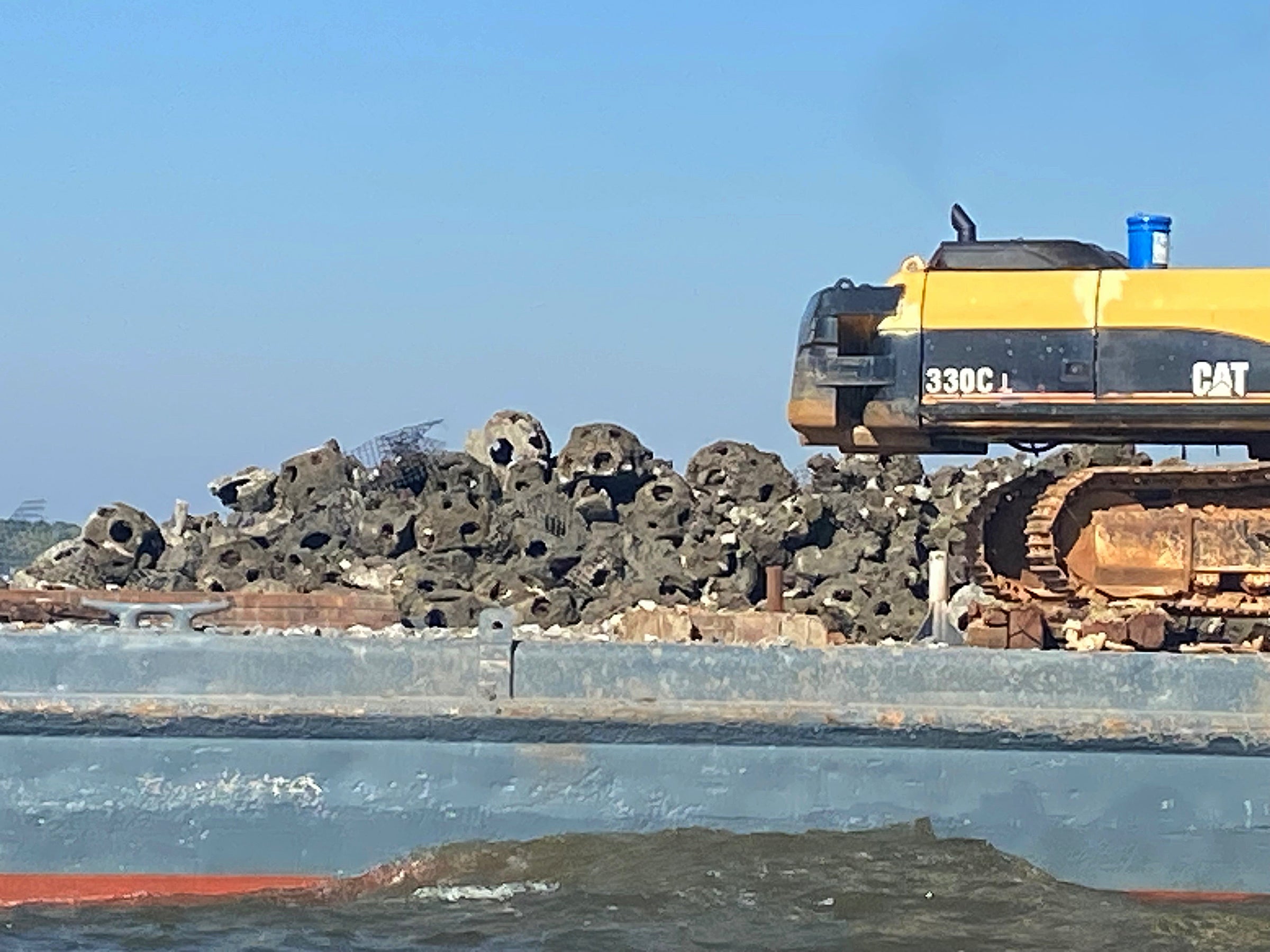By DAVID RAINER, Alabama Department of Conservation and Natural Resources
Famous author Stephen King once wrote that “Sooner or later, everything old is new again,” which applies to recent work in Alabama’s coastal waters. Obsolete structures once used for shoreline protection in Mobile Bay are being used to create new habitat for oysters, crustaceans and the bountiful inshore fish species that inhabit Alabama’s biodiverse estuaries and bays.
The Nature Conservancy teamed up with the Alabama Department of Conservation and Natural Resources (ADCNR), Mobile County, Dauphin Island Sea Lab, the University of South Alabama and Alabama Gulf Seafood to repurpose material from the shoreline protection project that was deployed in 2011 in Mobile Bay in the aftermath of the Deepwater Horizon oil spill. Funding from the American Recovery and Reinvestment Act was used by The Nature Conservancy, ADCNR and Mobile County to complete the project.
“It was three different types of reefs that we put in the water as an experiment to see what worked best to protect the shore, for the fish and for the oysters,” said Judy Haner, The Nature Conservancy’s Marine and Freshwater Programs Director for Alabama. “In the end, these particular cages took a beating from the waves. Even though they weren’t really protecting the shore anymore, they were still great fish habitat, and oysters were still on them.
“We knew they were ready to come out of the water because Mobile County is getting ready to build a breakwater system and backfill some mud to rebuild the shoreline starting this fall.”
The project involved removing the cages with a track hoe fitted with a grapple on a barge and transporting them to an open area at Bayou La Batre’s City Docks. The Nature Conservancy staff, partners and volunteers assembled to disassemble the cages. Oysters were collected and sorted to be returned to known oyster reefs near Bayou La Batre.
“We thought this was going to take us two days because we’ve never done this before,” Haner said. “We had no idea. We asked folks to show up at 8 o’clock. They showed up at 7. We got rolling and, before we knew it, we got the project done in half a day instead of the two days we thought. Many hands make for little work.”
The next phase of the project involved using the same equipment and barges to collect the Reefballs that were deployed in the same areas as the cages and reuse them in the construction and enhancement of inshore artificial reefs under construction by the ADCNR’s Marine Resources Division (MRD).
“Those are concrete dome habitats that were also part of this project,” Haner said. “Those are covered in mussels and oysters, and they have been repurposed and used on an artificial fishing reef that ADCNR created near Dog River. We’re really excited about that. That’s a full-on repurposing of the entire material to benefit the fishers.”
Craig Newton, MRD’s Artificial Reef Coordinator, explained how part of the material that was removed during the recent work in Mobile Bay was used in the construction of the Dog River Reef, one of four new reefs in Mobile Bay.
“The new reefs are all 10 acres in size,” Newton said. “One is about a half-mile south of the Dog River channel. The Dog River Reef has 3- to 6-inch limestone aggregate in the interior 7 acres of the reef site. Then around the perimeter of the reef site, we’re going to place these repurposed Reefballs that were pulled out of the water. Then we have the Wellhead Reef and the Ghost Rig Reef sites. Those are on the western side of the bay. We’re going to have 3- to 6-inch limestone aggregate on those as well. The fourth new reef site is the Bon Secour Reef, which has the same material and metrics as the other new reefs.
“In addition to the four new reefs we’re constructing, the Alabama Wildlife Federation (AWF) purchased another $250,000 worth of rocks, and those are going to go to the Boykin Reef and the Bender-Austal Reef to enhance those for a little more oyster productivity.”








